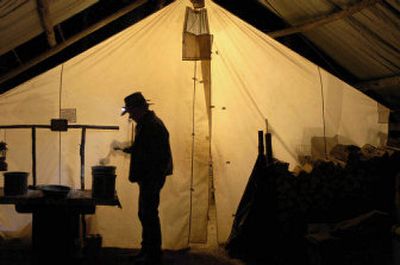The Bob: Hunting camp trip provides chance to experience wilderness

It’s day five of Bobby and Dave Terese’s 10-day hunting trip into the Bob Marshall Wilderness Area. Neither has bagged his elk yet, but this morning, as the two New Orleans cousins wolf down bacon and eggs, they fill the air with Cajun accents and raucous laughter, the optimism of another day in the wild.
Hunting is a journey, not a destination for these two. If they shoot an elk, they’re thrilled. If they don’t get anything, they say they’ll still consider the trip a success.
“If I don’t go home with an elk, that’s OK. That’s not what I’m here for,” Dave Terese says later that day, standing around the campfire after 11 hours on horseback and hiking. “When we came across those mountains and hit the Continental Divide, those views were breathtaking.”
“But this will be the best place in the world when that elk hits the ground,” Bobby Terese adds with a broad grin.
Hunting is big business in Montana. An estimated 100,000 Montanans were expected to hit the mountains and plains on the recent opening day of the big-game general season.
The Terese cousins are here for a special early elk season, and have paid close to $1,000 each just for their licenses. They’re part of the 17,000 nonresident hunters who come to Montana each year.
Their guided trip costs each about $3,600, which doesn’t include airfare, tips and gear. It’s estimated that hunters spend about $6 million each year on ammunition alone, and $9 million on firearms.
“Elk hunters spend about $98 million a year; deer hunters spend $74 million and antelope hunters spend $7 million,” said Ron Aasheim, community education administrator for Montana Fish, Wildlife and Parks. “It’s a quarter-billion-dollar industry.”
If you include fishing and wildlife viewing, it’s more than a billion-dollar industry, he adds, with around 8,100 jobs generated.
The outlook for big game was good in Montana this year. According to FWP, deer and elk hunters in north-central Montana will be “faced with an embarrassment of riches.”
“There are lots of mule deer,” said Gary Olson, FWP wildlife biologist in Conrad. “And they are everywhere. It’s going to be an excellent year for hunters.”
Olson attributes that to several years of mild winters and near-average moisture that have created good conditions for big game.